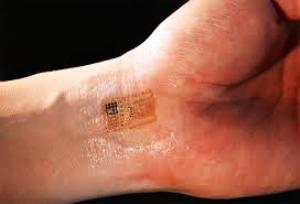Self-guided nano chips and structure of biomedicine and nano biosensor sensors based on nano-microelectronics PhD
Author and Researcher: Engineer Afshin Rashid
Note: In the military and national security sector, nano-chips require highly sensitive detectors and sensors that can be widely distributed so that they can detect radiation and biomass when necessary. In the medical field, highly sensitive sensors are needed, such as labs on the chip, to detect the smallest signs of cancer.
In the aerospace industry, the nano-chips themselves require detectors and nanosensors to be mounted on the aircraft body as a fixed warning system and to determine when the aircraft needs repairs.
In the automotive industry, nano-chips and nanosensors can be used to optimize fuel consumption. Also, in high-priced cars , these nanosensors can be used to improve the condition of the seats and the controls available to suit different body postures. Next, it can be used in information technology to encourage the pervasive use of always-on computing systems.
Biosensor or biosensor, Test of care
A biosensor or biosensor is the name of a group of sensors. These sensors are designed to react with a single material . The result is a message that a microprocessor can analyze. These sensors are used to detect and quantify species in biological systems.
These sensors consist of three parts:
A ( biological acceptor or bioreceptor: a biological element) is antibodies, nucleic acids, enzymes, cells, tissues and other biological substances ( which can selectively react with a particular substance only).
( Detector and converter: which acts after the reaction of certain substances with biological acceptors and can determine the type and amount of reaction by various physico-chemical methods ) Example by examining electrochemical, optical, mass or thermal changes before and after Reaction (and send it to the CPU by appropriate signals.
C) Signal processors: mainly responsible for displaying results and performing sensor calculations.
Biosensors have been the focus of many research centers in recent years. Because biosensors are powerful tools for identifying biomolecules, they are nowadays used in various medical sciences, chemicals, food industries, environmental monitoring, manufacturing
They use pharmaceuticals, health products and more.
Tip: The human olfactory and taste senses, which detect odors and flavors, or the immune system that identifies millions of different molecules , are examples of natural biosensors. The most widely used biosensors are in medical diagnostics and military science .
The most common use of these sensors in the military and medical sciences, including rapid detection of diseases by means of rapid tests or tests of care, is characterized by the speed and cheapness of testing.
With the advent of nanoelectronics and microelectronics science and technology and the possibility of making small-scale electrodes, nanometer sensors were made possible. This
The sensors were named nanobiosensor nanobiosensors because of their nanometer size and their application in biological environments. Biosensors are very small electrodes of nanometer size and cell size that are sensitive to the detection of the desired chemical or biological species in cells by immobilizing specific enzymes on their surface . These sensors are used to detect and quantify species in biological systems. This technique is a very useful method for detecting the passage of some molecules through the cell wall or membrane.







